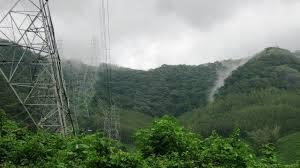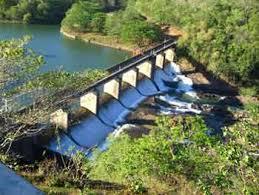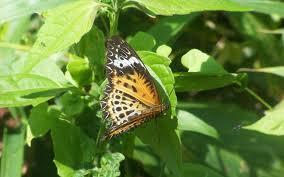Shenduruney Wildlife Sanctuary - Beautiful Bio Reserve in Kollam
Shenduruney wildlife sanctuary is a beautiful bio reserve located in Kollam district of Kerala. The reserve lends its name from a Shenduruny tree. This type of tree grows in abundance in this part of the state. This Pathanapuram-situated wildlife sanctuary was established in 1984. The wildlife sanctuary was initially under the jurisdiction of the Thenmala Forest Division. Later, it was separated into a wildlife sanctuary by the Kerala government.
Shenduruney Wildlife Sanctuary
This bio reserve was established in 1984 after carving it out from the Thenmala Forest Division. The sanctuary is known for Shenduruney trees that grow in abundance there. Located in Pathanapuram Taluk, it is about 66 kilometres away from Kollam town on the Kollam-Shencotta Highway. This wildlife park is spread over a total area of 100.32 kilometres. The flora and fauna found in the reserve are fed by water drawn from Shenduruney River that flows across it. The adventure seekers would have a nice time in the sanctuary as they get plenty of opportunities to do trekking to reach some of the picturesque spots on the Western Ghats bordering neighbouring state of Tamil Nadu. They will be able to enjoy some of the beautiful landscape en route to their destinations on the Western Ghats. While travelling, they might come across small mountain ranges that are part of the Western Ghats. Another viable option for the travellers reaching this sanctuary is to take a stroll in the lush green to see various animals and plants that inhabit there. Normally, one would come across wild beast when walking around the sanctuary. Due to the construction of the dam over the Shenduruney River, about 23 square kilometres of the sanctuary was actually submerged in water. The best tine to visit in this sanctuary is between December and February every year.
History of Sanctuary
According to a study, the sanctuary is home to a civilization that dates back to over 6000 years. The archaeologists have found out Stone Age caves on the north-western part of Shenduruney River. The studies indicate that there used to Shenduruney River Valley Civilization on the banks of this river. The archaeologists have found out the remains of the people belonging to the civilization. According to one estimate, the excavations done at various points within the reserve have yielded artefacts and remains that date back to 5210 BC and 4420 BC. If these are found to correct, the civilization found on the banks of this river is older than the famous Indus Valley Civilization (4400-3700 BC). These findings indicate that Shenduruney River Valley Civilization is one of the ancient River Valley Civilizations known to the mankind. The archaeologists strongly believe that the Stone Age caves found in the sanctuary might have been made by the people of this civilization. The cave paintings found in these caves are similar to the Mesolithic paintings found in the central Indian caves.
Geography
The wildlife sanctuary can be found on the southern side of the Western Ghats mountain range. Located on the latitudes 8°50' and 8°55'N; 77°5' and 77°15'E, it is rich in flora and fauna. A beautiful lake is found in the middle of the sanctuary, and it was built by Thenmala Dam authorities. The locals call this dam as Parappar Dam. This artificial lake is seen in between and at the confluence of Senduruney and Kulathupuzha rivers. The dam constructed across the confluence of rivers has created a reservoir that feeds the flora and fauna in its vicinity. Being a large reservoir, it is able to support a large number of marine ecosystems. Hence, the visit to the reservoir via boating would open the visitor to a totally different world.
Flora
The wildlife sanctuary is home to a large reservoir and an artificial lake. Hence, it is able to support various types of vegetations. The vegetations that are found in the reserve include tropical evergreen forest, mixed deciduous forest, tropical semi-evergreen forest and hilltop tropical evergreen forest. The soothing climate in this habitat has allowed over 951 species of plants and shrubs to thrive without any difficulties for many years. Once, the biologists visiting in this sanctuary have found the existence of some plants with medicinal properties. After the discovery, many pharmaceutical companies and national laboratories have sent their research team to study about these medicinal plants and herbs. The results of these studies have already started percolating into the treatment of some of the diseases.Fauna
Due to the rich presence of flora, the sanctuary has many animal species. The visitors need to explore its higher reaches to find different species of animals. Many routes involve a lot of trekking. Hence, the visitors need to take prior permission from the Kerala Forest Department officials to start trekking to these biological hotspots deep inside the sanctuary. In these regions, one can find Indian bison, barking deer, the Sambar Deer, mouse deer, Indian elephant, wild boars, etc. roaming freely. Simple strolls near the common areas would help people come across the magnificent wild boars and elephants. The biologically active spot found deep in the territory is still unspoilt by the mankind as these are difficult to reach. The beasts that we refer to could be seen roaming freely without any fear in these spots. Some of the terrain features in this biological reserve give these exotic beasts habitats to sleep peacefully in the night. Due to this reason, only a limited number of people would be allowed to go into these habitats with a prior instruction that they would not touch or spoilt anything there.
Conclusion
This is another wildlife park meant for the preservation of flora and fauna from the invading mankind. This park was carved out from the Thenmala Forest Area in 1984 to establish Shenduruney Wildlife Sanctuary by Kerala government. The park area had a tryst with an ancient River Valley Civilization that is older than the famous Indus Valley Civilization. Archaeologists have chosen to call it Shenduruney River Valley Civilization. The people belonging to this civilization have created some of the Stone Age caves with exclusive paintings of that time. These can be found in the north-western part of the Shenduruney River. There is an artificial lake between the Shenduruney and Kulathupuzha Rivers. People can see huge varieties of flora and fauna in this sanctuary. However, people have to trek to reach the interior or the higher areas of the biological park to come across the different species of animals. These biological hotspots have so far remained safe from the invading mankind. There are many plants and herbs with medicinal values in this wildlife park. Hence, people have been flocking this valuable reserve to understand the biological properties of these medicinal plants. The best place to visit this park is between December and February every year. Hence, pick your backpack with all necessary travel accessories and move towards this destination to learn from nature.

 Job oriented
Job oriented